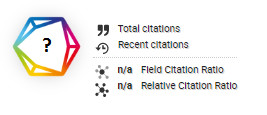Development of an Archival Management Application for Integration and Monitoring of Documents in Coordination Meetings
DOI:
https://doi.org/10.46984/sebatik.v28i2.2210Keywords:
Archival Management, Application, Website, Government Institution, MonitoringAbstract
Archival management is of significant importance in institutions, requiring proper maintenance and organization of activity records. The Coordinating Ministry for Economic Affairs (Kemenko Perekonomian), as a government body, is responsible for coordination, synchronization, and control in the economic sector. Its coordination activities include inter-ministerial meetings aimed at formulating strategic policies and actions in the economic field. The Secretariat Division is tasked with facilitating these coordination meetings. The coordination meeting process involves preparing several key components, such as meeting invitations, materials, and documentation, including participant lists, recordings, minutes, and transcripts. Currently, the archiving of meeting documents is fragmented across various sub-sections within the Secretariat Division, leading to inefficiencies in document management. Furthermore, the absence of a centralized system to accommodate all coordination meeting records makes document monitoring challenging. To address these issues, an application has been designed to store meeting documents in a unified database, enabling more efficient document management, integration, and monitoring. The development of this application utilizes the waterfall model with UML diagram modeling. This application is expected to enhance document management processes within the Secretariat Division and provide greater convenience for users.
References
Faggin, F. (2024). Irreducible: Consciousness, Life, Computers, and Human Nature. John Hunt Publishing. https://www.collectiveinkbooks.com/essentia-books/our-books/irreducible-consciousness-life-computers-human-nature
Fajrianto, R. (2021). Perancangan Aplikasi Absensi Dengan Teknologi Location Based Service dan Metode Waterfall Untuk Mengatasi Antrian Absensi Yang Panjang dan Mengurangi Resiko Terpapar Covid-19 (Studi Kasus: PT. Modern Gravure Indonesia).
Firdaus, N., & Irfan, D. (2020). Rancang Bangun Sistem Informasi Arsip Berbasis Web Menggunakan Framework Codeigniter. Jurnal Vocational Teknik Elektronika Dan Informatika, Vol. 8, No. 1. http://ejournal.unp.ac.id/index.php/voteknika/index
Gupta, S., Dutta, P. K., Roy, S., Bhaduri, A., Maji, K., Choudhary, A., & Sarkar, A. (2024). Evaluating Waterfall vs. Agile Models in Software Development for Efficiency and Adaptability. In Practical Approaches to Agile Project Management (pp. 142-148). IGI Global.
Mallisza, D., Hadi, H. S., & Aulia, A. T. (2022). Implementasi Model Waterfall Dalam Perancangan Sistem Surat Perintah Perjalanan Dinas Berbasis Website Dengan Metode SDLC. Jurnal Teknik, Komputer, Agroteknologi Dan Sains, 1(1), 24–35. https://doi.org/10.56248/marostek.v1i1.9
Rumengan, A., Mewengkang, A., Kaparang, D. R., Pendidikan, J., Informasi, T., Komunikasi, D., & Teknik, F. (2021). Sistem Informasi Manajemen Kearsipan Berbasis Web. In Jurnal Pendidikan Teknologi Informasi dan Komunikasi (Vol. 1).
Sandfreni, S., Ulum, M. B., & Azizah, A. H. (2022). Pemodelan Role Based Goal Oriented Model Dalam Mengembangkan Elektronik Layanan Pusat Studi Di Fasilkom Universitas Esa Unggul. Sebatik, 26(2), 651–658. https://doi.org/10.46984/sebatik.v26i2.2105
Sundaramoorthy, S. (2022). UML diagramming: a case study approach. Auerbach Publications.
Yuliana, K., Maesaroh, S., & Hasanah, M. (2020). Desain Sistem Manajemen Arsip Kependudukan Studi Kasus Kelurahan Sukabakti Tangerang. Vol. 6, No. 1.
Downloads
Published
How to Cite
Issue
Section
License
Copyright (c) 2024 Siti Minatus Syarof, Muhamad Bahrul Ulum

This work is licensed under a Creative Commons Attribution 4.0 International License.
Authors retain all their rights to the published works, such as (but not limited to) the following rights; Copyright and other proprietary rights relating to the article, such as patent rights, The right to use the substance of the article in own future works, including lectures and books, The right to reproduce the article for own purposes, The right to self-archive the article








